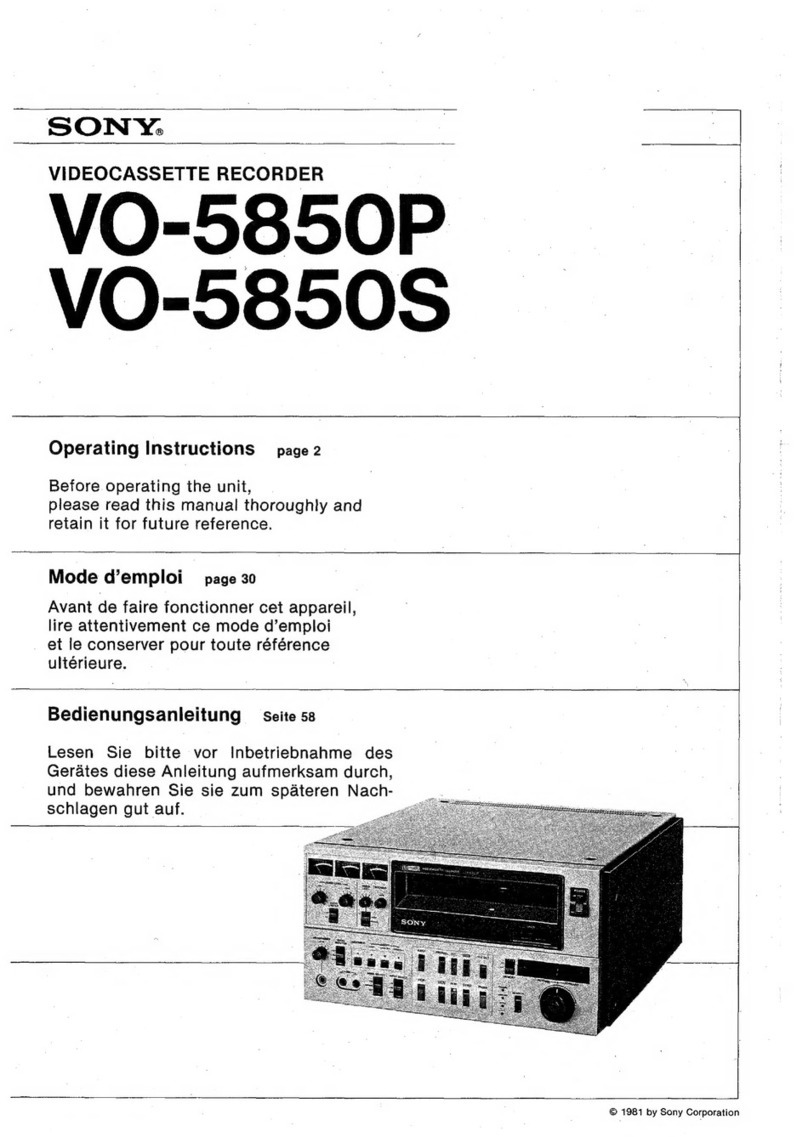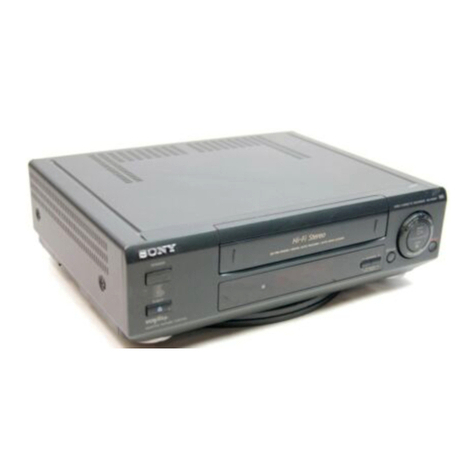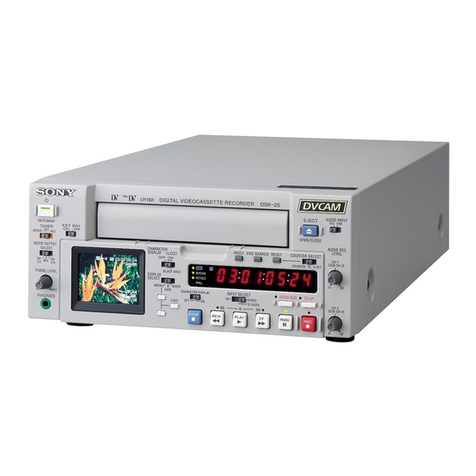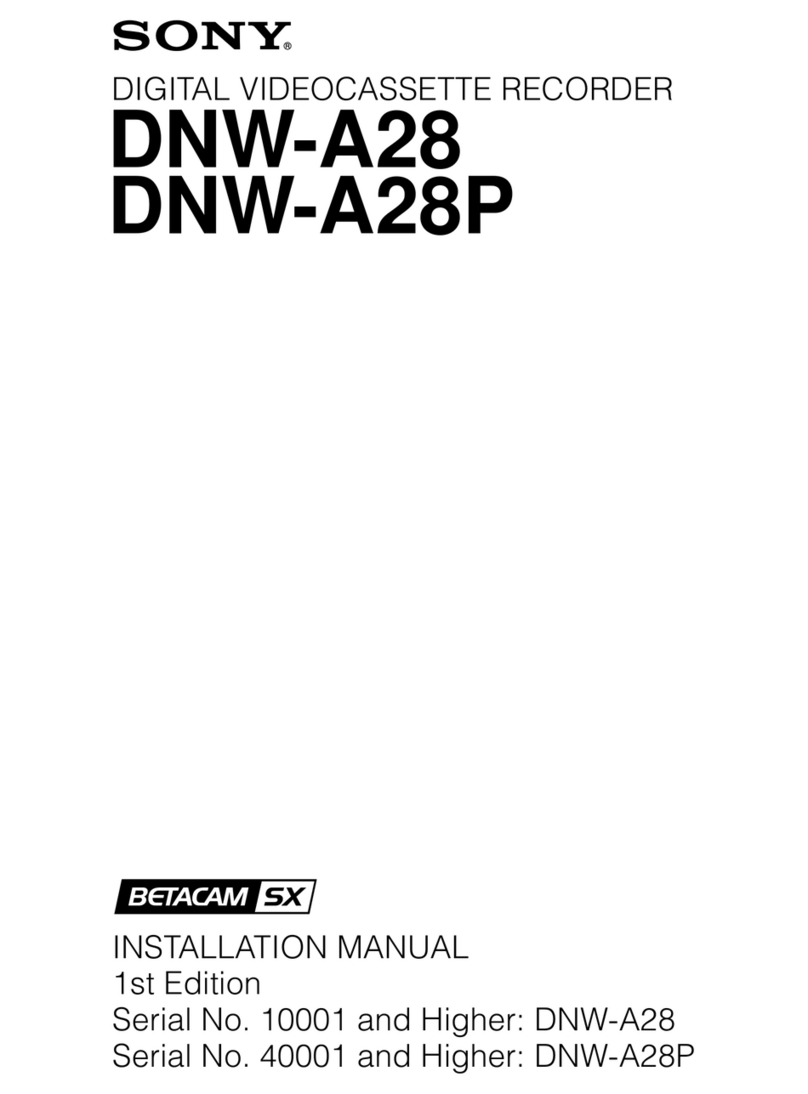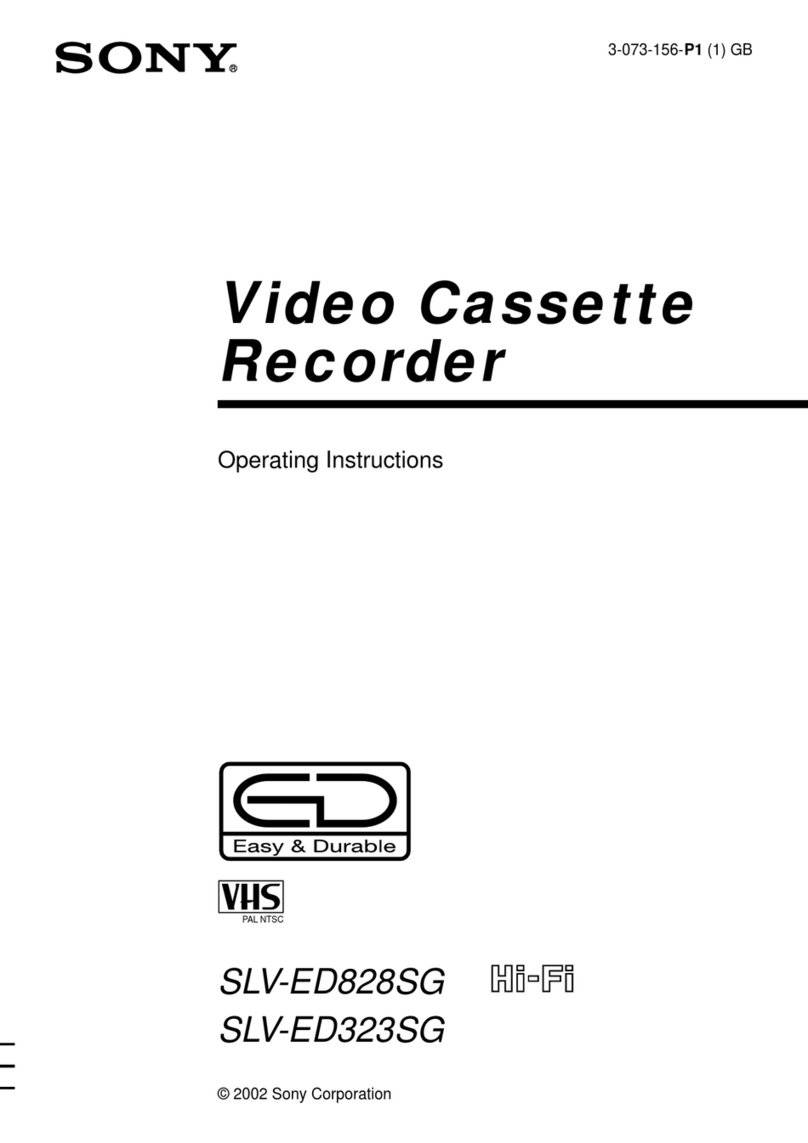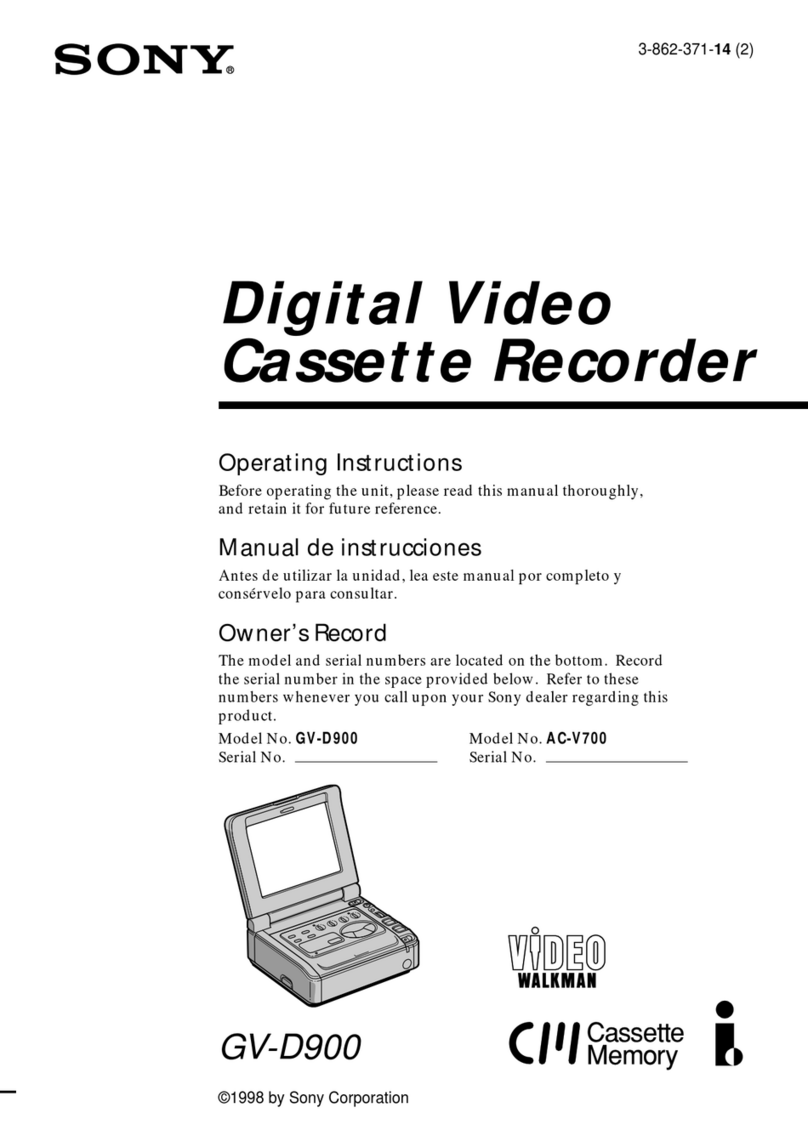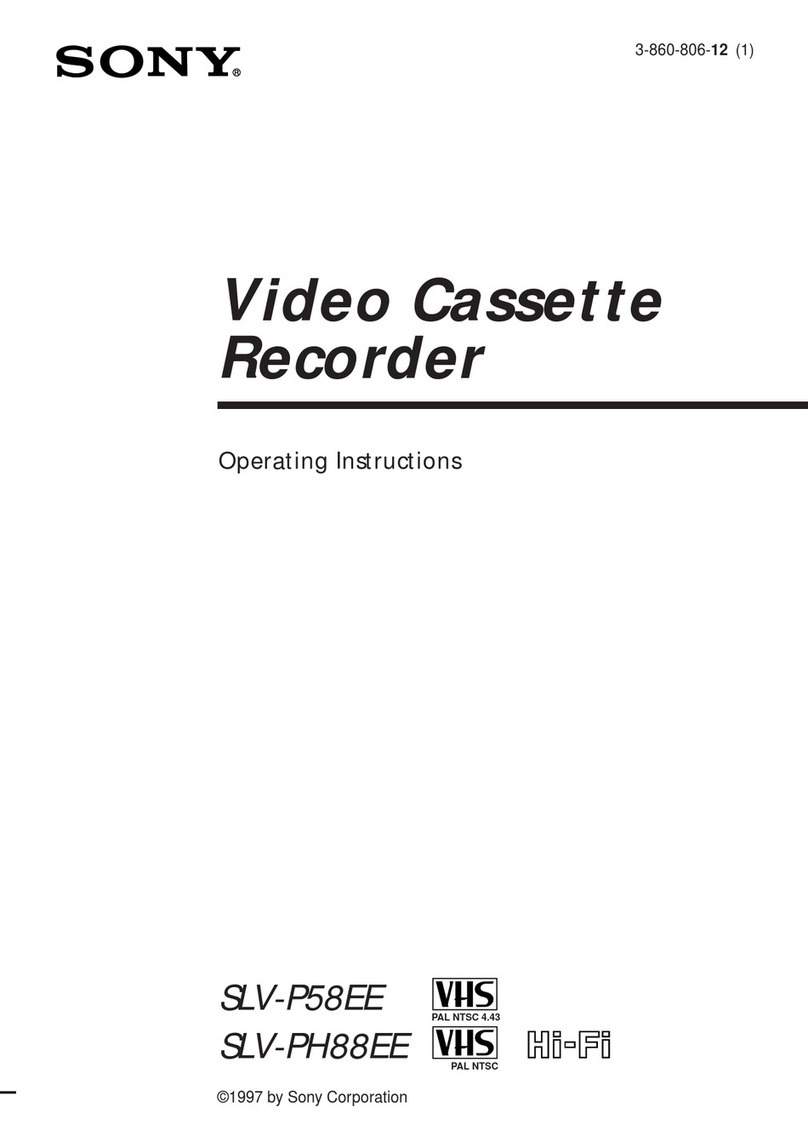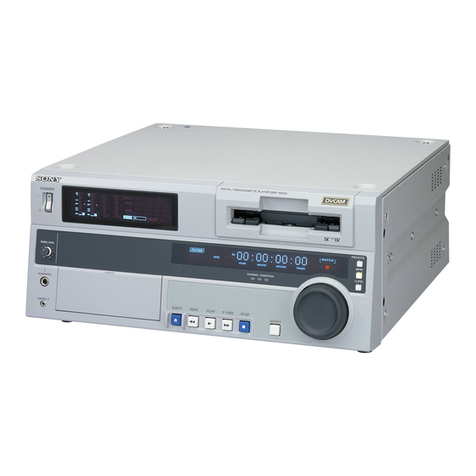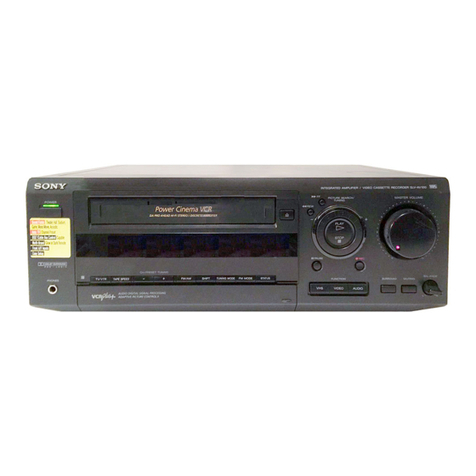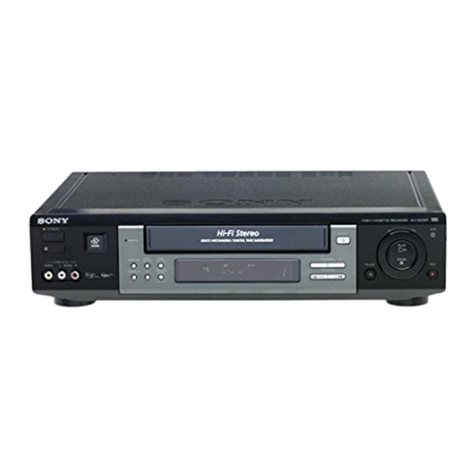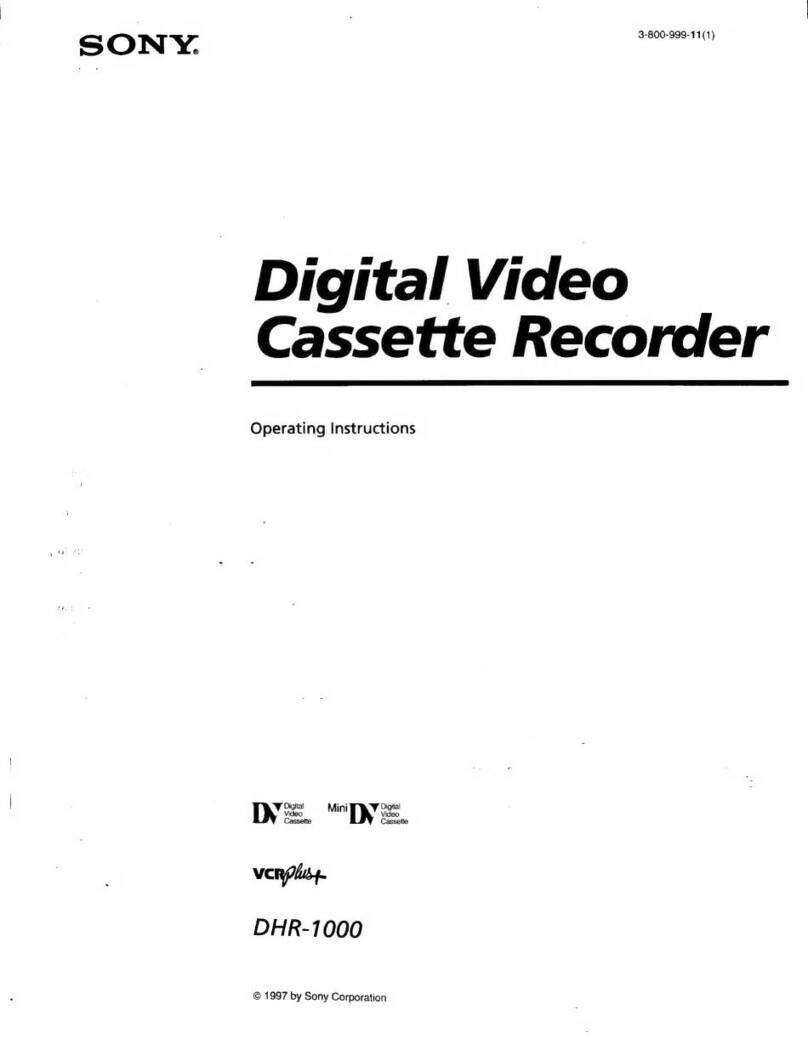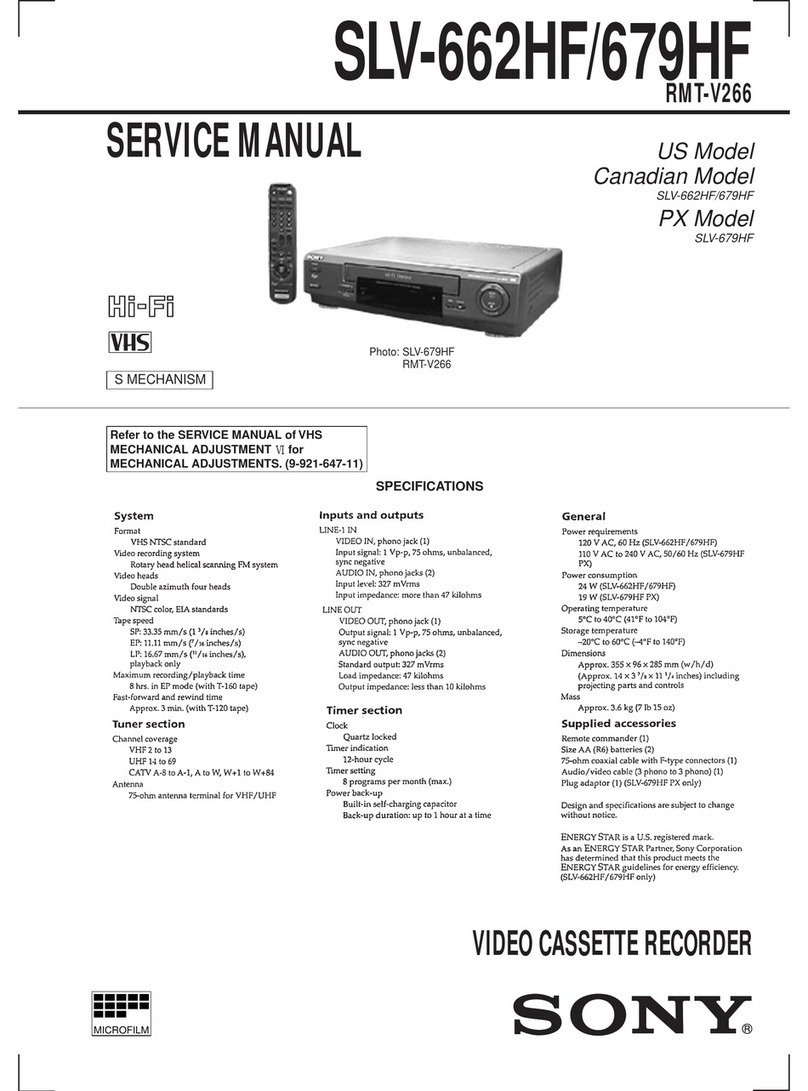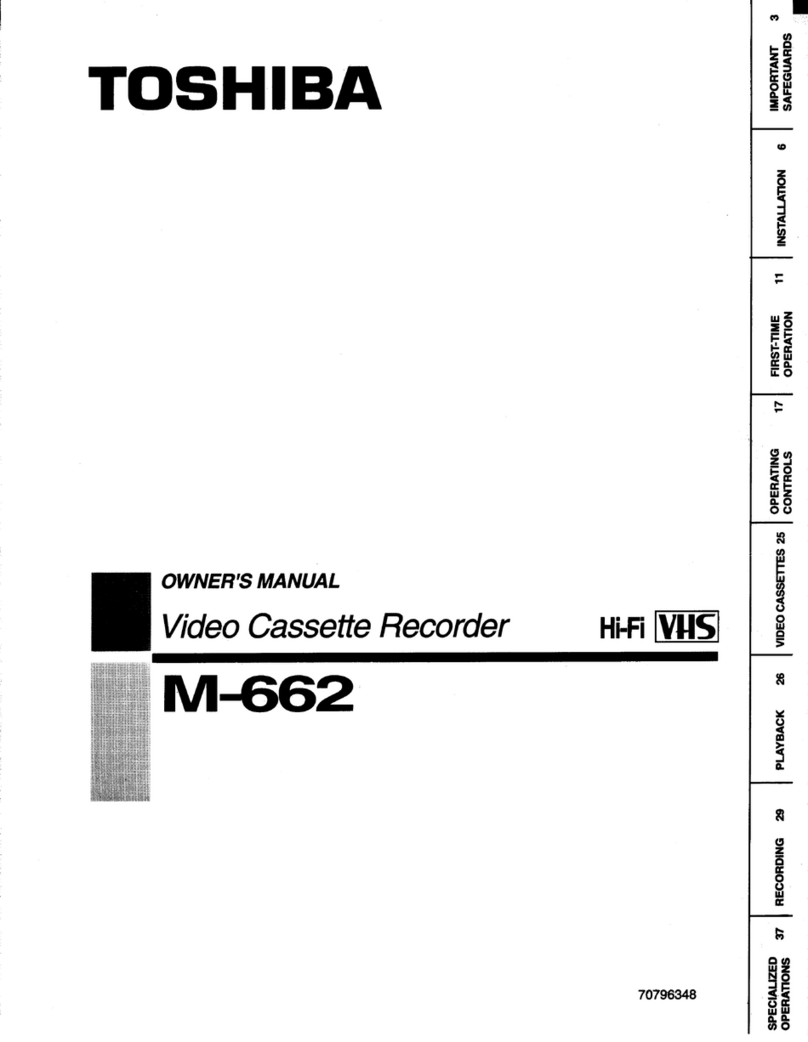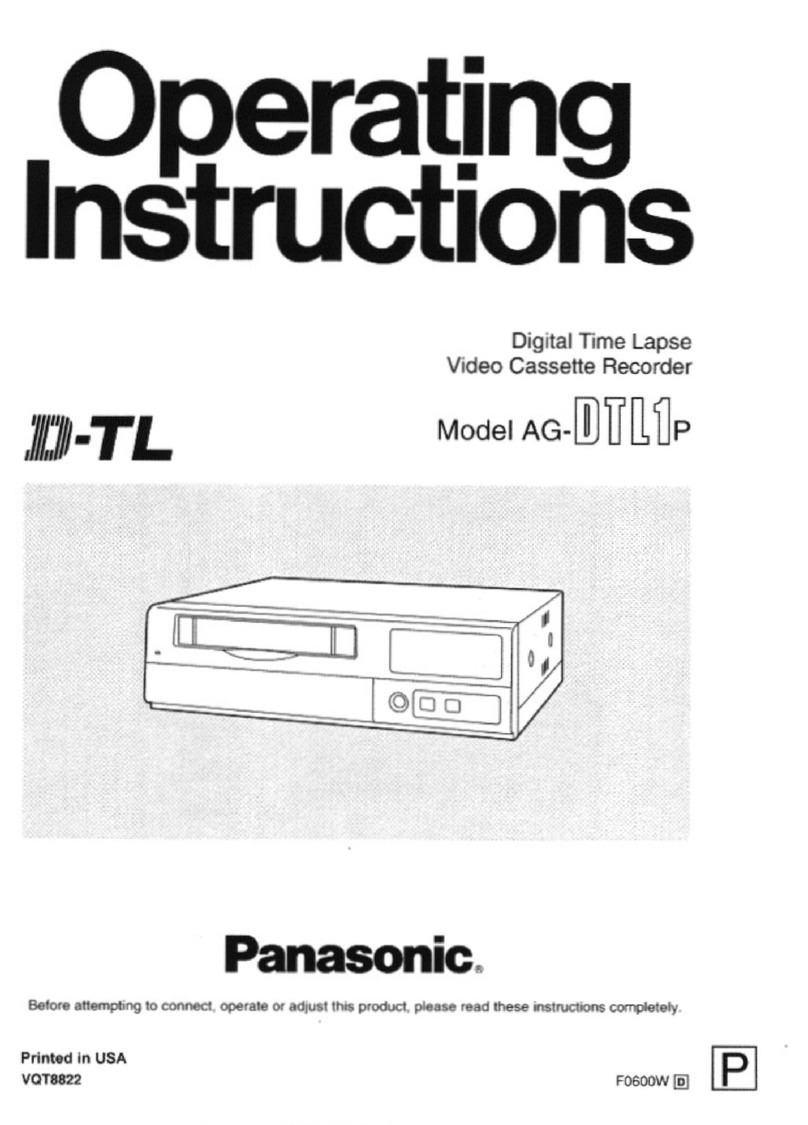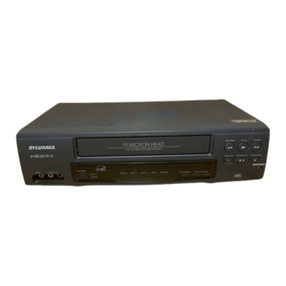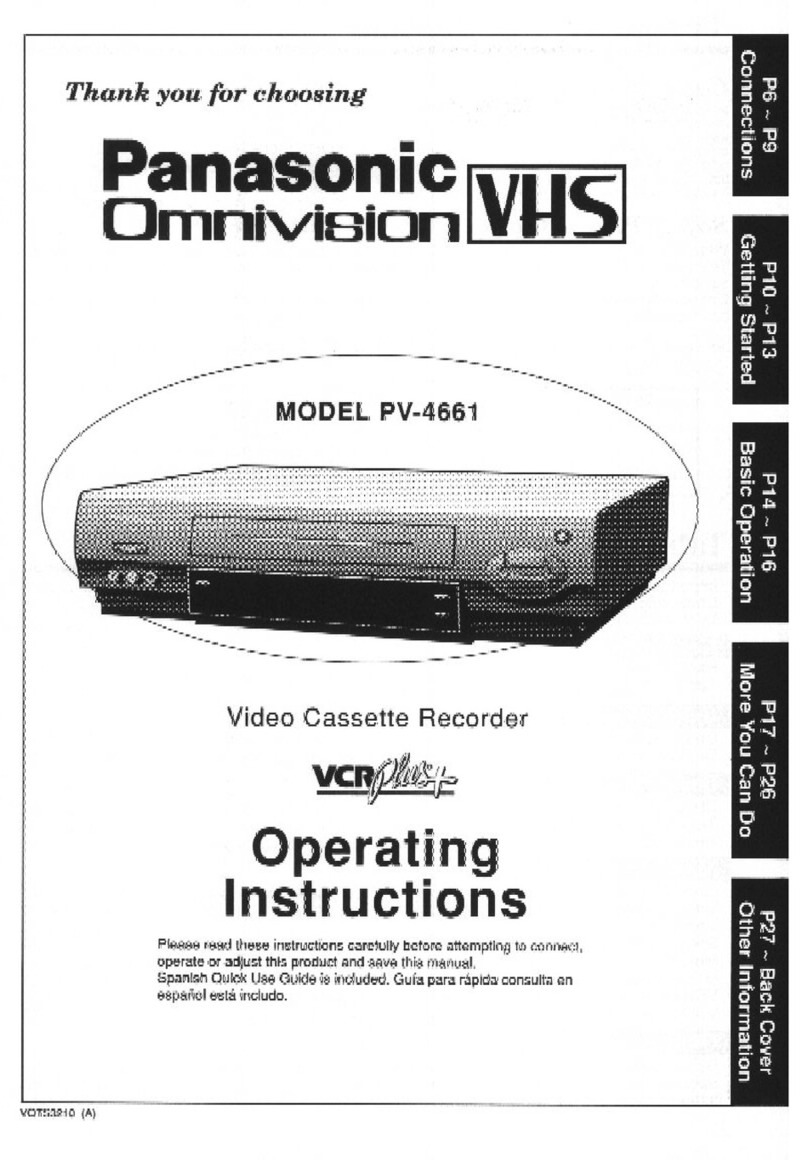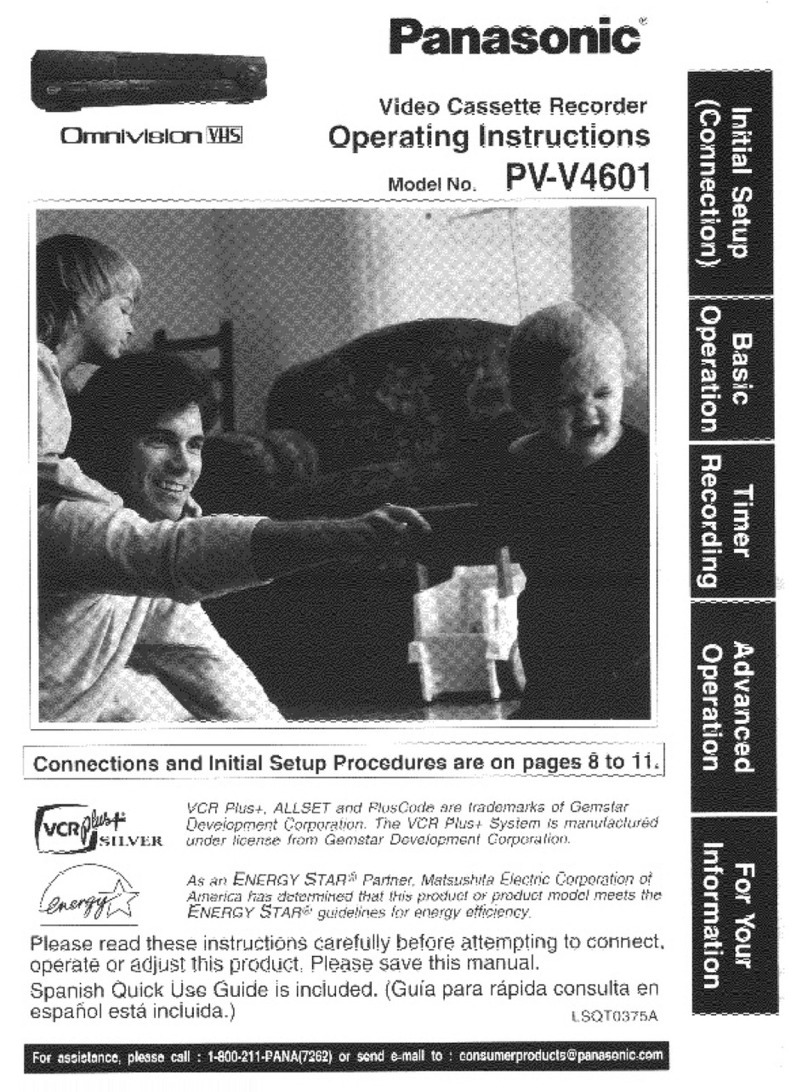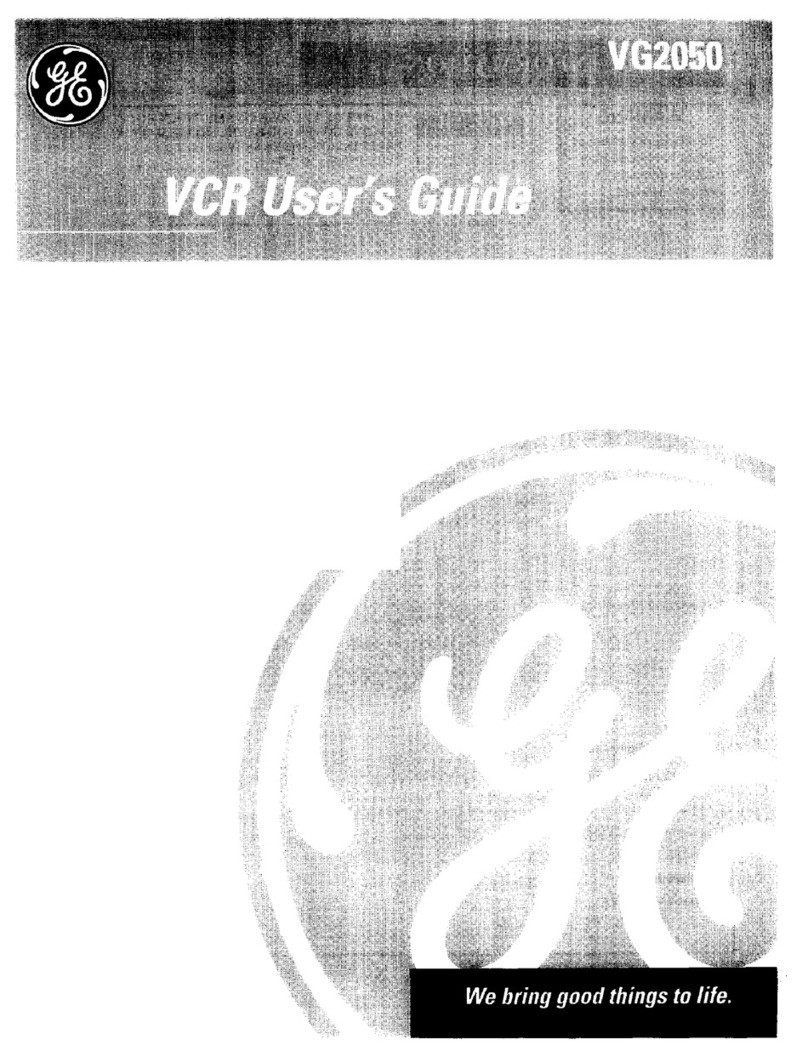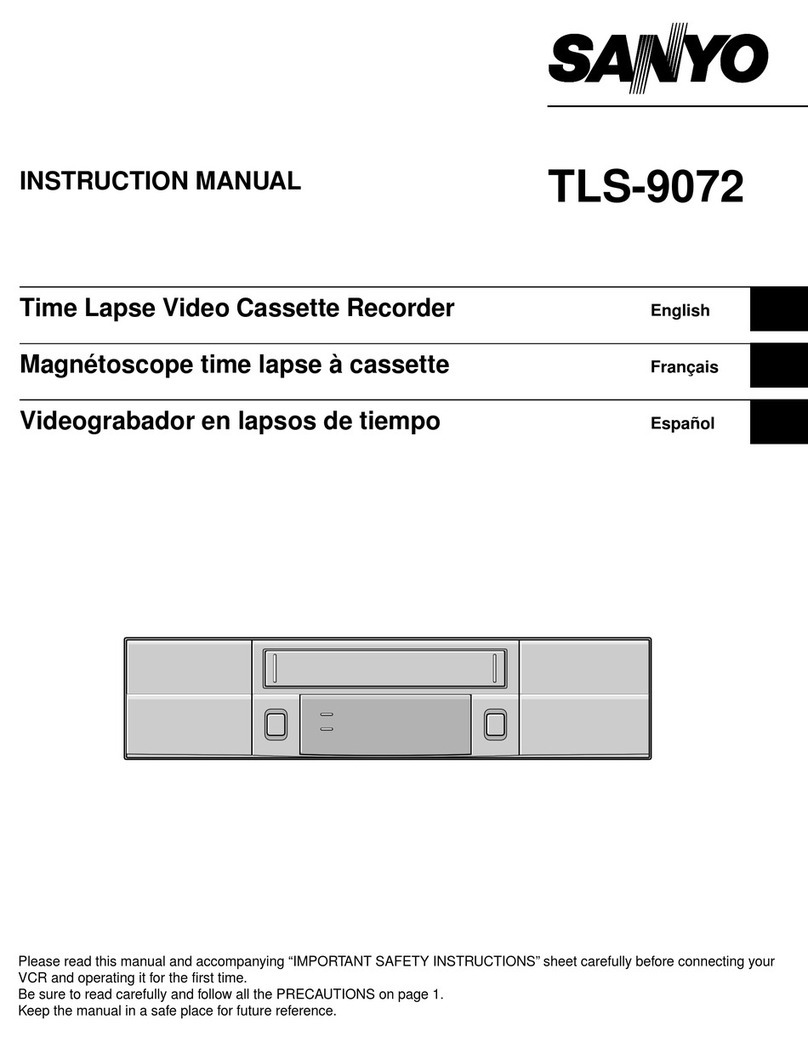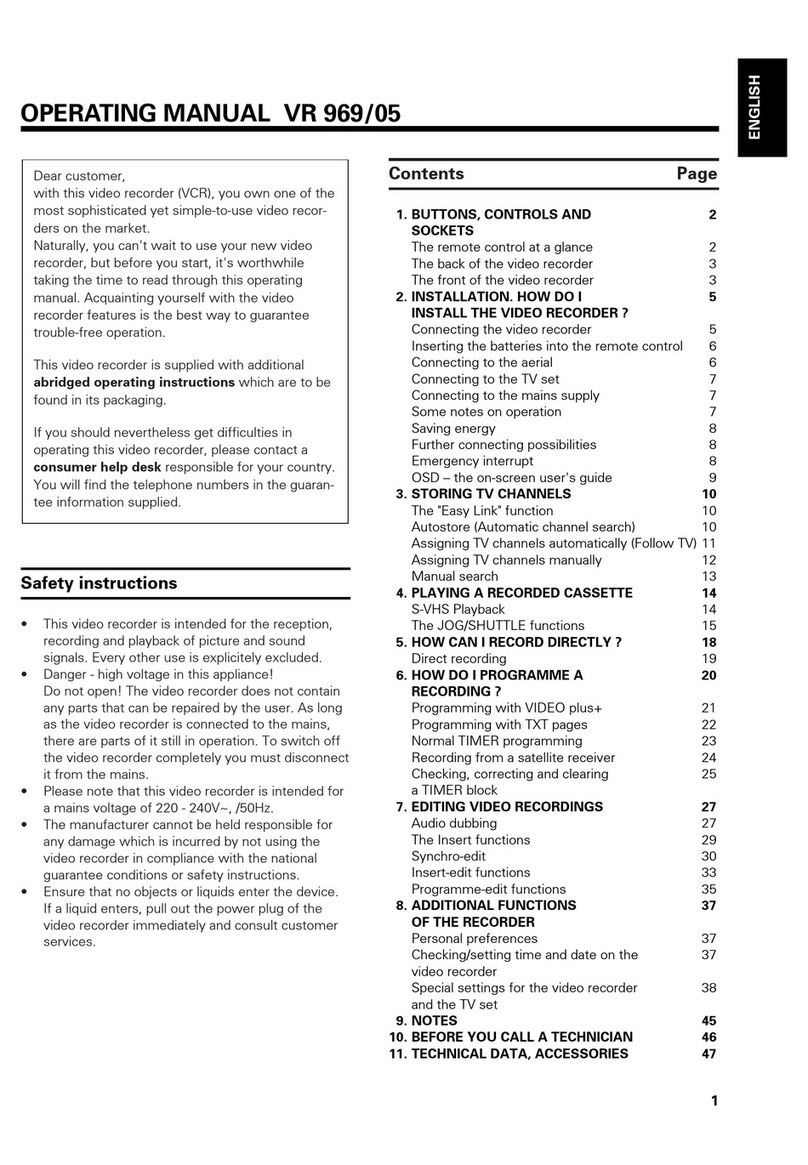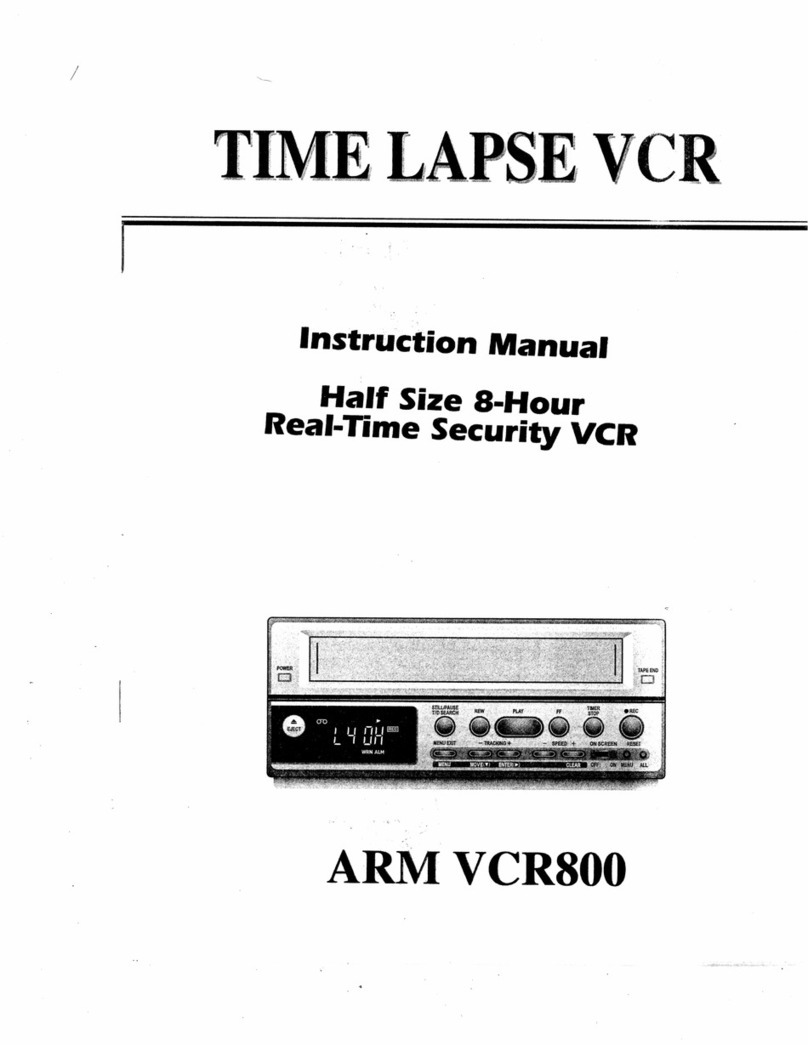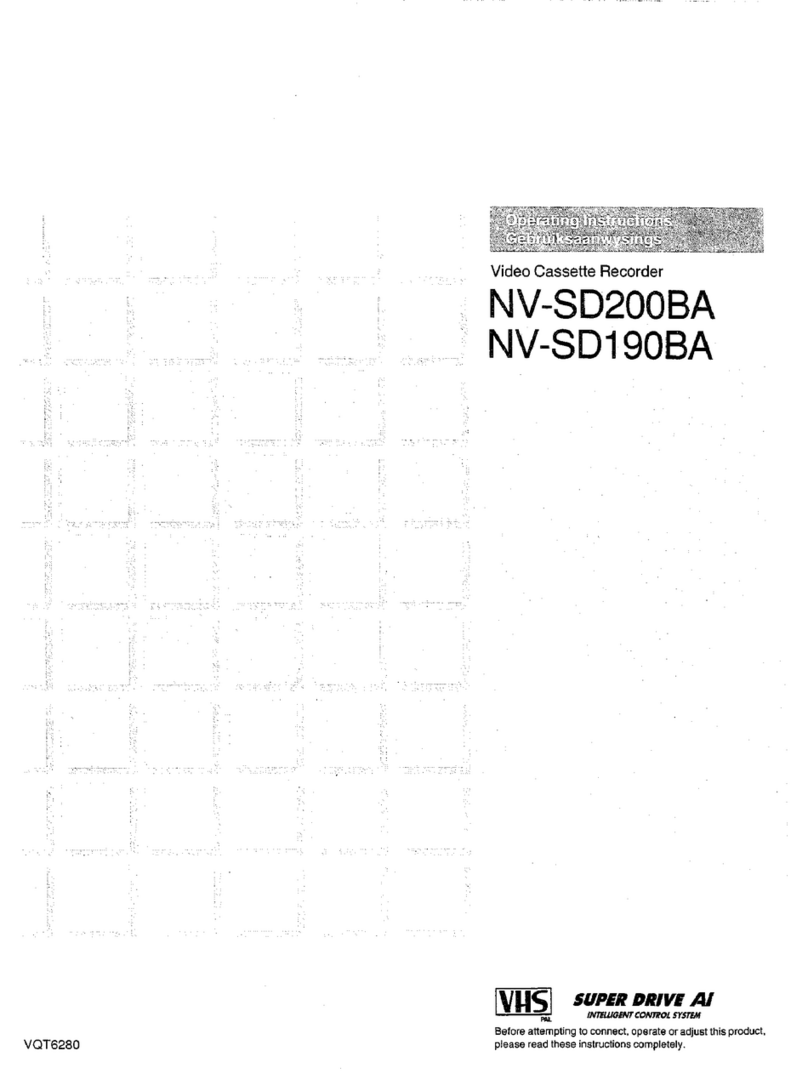
— 3 —
TABLE OF CONTENTS
SELF-DIAGNOSIS FUNCTION
1. Self-diagnosis Function ················································ 5
2. Self-diagnosis display··················································· 5
3. Service Mode Display ·················································· 5
3-1. Display Method ···························································· 5
3-2. Switching of Backup No. ············································· 5
3-3. End of Display······························································ 5
4. Self-diagnosis Code Table ············································ 6
1. GENERAL
Before you begin
Using this manual ······························································· 1-1
Checking supplied accessories ··········································· 1-1
Basic operations
Installing the AC power adaptor ········································· 1-1
Inserting a cassette ······························································ 1-1
Playing back a tape ····························································· 1-2
Advanced operations
Watching on a TV screen ···················································· 1-3
Editing onto another tape···················································· 1-4
Recording from a VCR or TV ············································ 1-4
Changing the mode settings················································ 1-5
Using alternative power sources ········································· 1-6
Additional information
Charging the vanadiumlithium battery in the VCR ············ 1-7
Usable cassettes and playback modes································· 1-7
Notes on “InfoLITHIUM” battery pack ····························· 1-7
Maintenance information and precautions·························· 1-8
Using your VCR abroad ····················································· 1-9
Trouble check ········································································· 1-9
Self-diagnosis display····························································· 1-10
Identifying the parts································································ 1-10
Warning indicators·································································· 1-11
2. DISASSEMBLY
2-1. CASSETTE LID ASSEMBLY ····································· 2-1
2-2. LCD CABINET···························································· 2-1
2-3. CRYSTAL INDICATION MODULE,
FLUORESCENT COLD CATHODE TUBE,
PD-88 BOARD····························································· 2-2
2-4. CABINET (BOTTOM) ASSEMBLY··························· 2-3
2-5. MD BLOCK ASSEMBLY ··········································· 2-3
2-6. CONTROL (FK-71) SWITCH BLOCK,
DD-100 BOARD ·························································· 2-3
2-7. VC-197 BOARD ·························································· 2-4
2-8. B MECHANISM DECK ·············································· 2-4
2-9. CABINET (R) BLOCK ASSEMBLY,
FP-571 BOARD ··························································· 2-4
2-10. EX-34 BOARD ···························································· 2-4
2-11. IO-62, IR-29, FP-572, FP-573, FP-574,
FP-575 BOARDS SPEAKER ······································ 2-5
2-12. CABINET (UPPER) ASSEMBLY ······························· 2-5
2-13. CIRCUIT BOARDS LOCATION ································ 2-6
3. BLOCK DIAGRAMS
3-1. OVERALL BLOCK DIAGRAM ································· 3-1
3-2. VIDEO BLOCK DIAGRAM 1 ···································· 3-4
3-3. VIDEO BLOCK DIAGRAM 2 ···································· 3-7
3-4. SERVO BLOCK DIAGRAM ······································· 3-10
3-5. SYSTEM CONTROL BLOCK DIAGRAM ················ 3-13
3-6. AUDIO BLOCK DIAGRAM ······································· 3-15
3-7. MODE CONTROL BLOCK DIAGRAM ···················· 3-17
3-8. LCD BLOCK DIAGRAM ··········································· 3-20
3-9. POWER SUPPLY BLOCK DIAGRAM ······················ 3-23
4. PRINTED WIRING BOARDS AND
SCHEMATIC DIAGRAMS
4-1. FRAME SCHEMATIC DIAGRAM····························· 4-1
4-2. PRINTED WIRING BOARDS AND
SCHEMATIC DIAGRAMS ········································· 4-4
• VC-197 (MAIN) PRINTED WIRING BOARD ······· 4-5
• VC-197 (REC/PB HEAD AMP)
SCHEMATIC DIAGRAM ··························· 4-11
• VC-197 (EVR) SCHEMATIC DIAGRAM ··············· 4-16
• VC-197 (VIDEO PROCESS)
SCHEMATIC DIAGRAM ··························· 4-19
• VC-197 (Y/C PROCESS)
SCHEMATIC DIAGRAM ··························· 4-23
• VC-197 (TBC/CNR) SCHEMATIC DIAGRAM ······ 4-27
• VC-197 (VIDEO IN/OUT)
SCHEMATIC DIAGRAM ··························· 4-30
• VC-197 (RGB DECODER)
SCHEMATIC DIAGRAM ··························· 4-33
• VC-197 (IR DRIVER), IR-29 (TRANSMITTER)
SCHEMATIC DIAGRAM ··························· 4-37
• IR-29 (TRANSMITTER)
PRINTED WIRING BOARD ······················ 4-40
• VC-197 (SERVO/SYSTEM CONTROL)
SCHEMATIC DIAGRAM ··························· 4-41
• VC-197 (SERVO) SCHEMATIC DIAGRAM ·········· 4-44
• VC-197 (MODE CONTROL)
SCHEMATIC DIAGRAM ··························· 4-47
• VC-197 (AUDIO) SCHEMATIC DIAGRAM ·········· 4-51
• IO-62 (AV IN/OUT) SCHEMATIC DIAGRAM ······ 4-55
• EX-34 (MULTI CONNECTOR)
SCHEMATIC DIAGRAM ··························· 4-59
• EX-34 (MULTI CONNECTOR)
PRINTED WIRING BOARD ······················ 4-63
• IO-62 (AV IN/OUT) PRINTED WIRING BOARD · 4-65
• PD-88 (LCD DRIVER)
SCHEMATIC DIAGRAM ··························· 4-68
• PD-88 (LCD DRIVER)
PRINTED WIRING BOARD ······················ 4-71
• DD-100 (POWER SUPPLY)
PRINTED WIRING BOARD ······················ 4-73
• DD-100 (POWER SUPPLY)
SCHEMATIC DIAGRAM ··························· 4-75
5. ADJUSTMENT
5-1. PREPARATIONS ························································· 5-1
1-1. PREPARATIONS BEFORE ADJUSTMENT ·············· 5-1
1-1-1.List of Service Tools····················································· 5-1
1-1-2.Adjusting Remote Commander ···································· 5-2
1. Using the adjusting remote commander ······················· 5-2
2. Precautions upon using the adjusting
remote commander ······················································· 5-2
1-1-3.Page D Address ···························································· 5-3
1-1-4.Page F Address ····························································· 5-4
1-1-5.Page E Address ····························································· 5-7
1-2. INITIALIZATION OF D, E, F PAGE DATA ··············· 5-8
1. Initialization of D, E, F Page Data ······························· 5-8
2. Modification of D Page Data········································ 5-8
3. Modification of F Page Data ········································ 5-9
4. Modification of E Page Data ········································ 5-10
1-3. Data Processing ···························································· 5-10
5-2. MECHANICAL SECTION ADJUSTMENT ·············· 5-11
2-1. OPERATING WITHOUT A CASSETTE···················· 5-11
2-2. TAPE PATH ADJUSTMENT······································· 5-11
1. Preparations for adjustments ········································ 5-11

